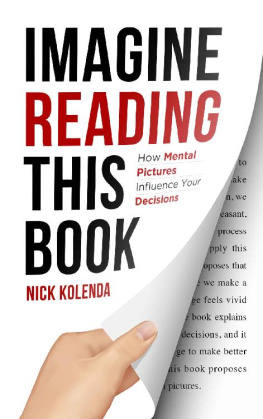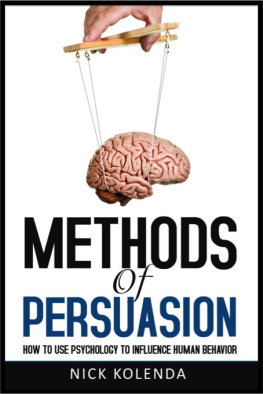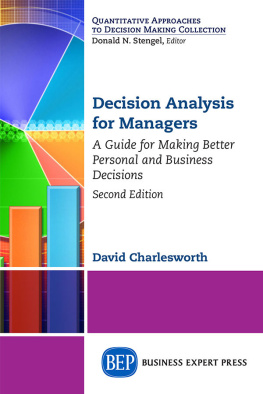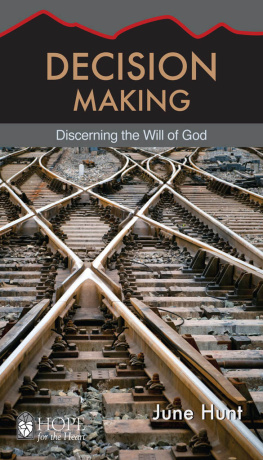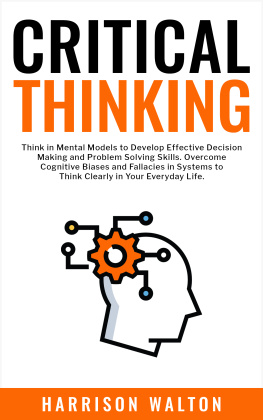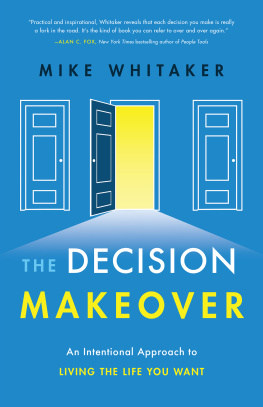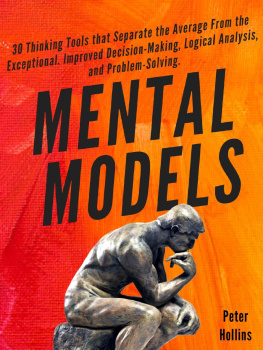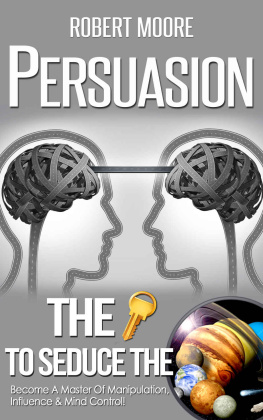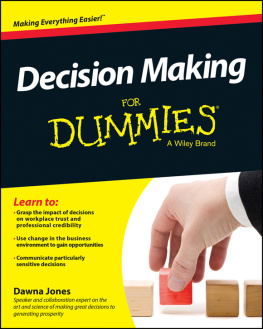
Copyright 2020 Nick Kolenda
www.NickKolenda.com
Published by Kolenda Group LLC
First Edition
ISBN: 978-1-7339789-7-2 (ePub)
All rights reserved. No part of this publication may be reproduced or distributed in any form or by any means, or stored in a database or retrieval system, without the prior written permission of the publisher.
Contents
Preface
Why are you reading this sentence?
Seriously, retrace your steps. What prompted you to pick up this book? What brought you to this exact moment?
If you purchased this book, then youll be investing time and money to read it. Clearly, something is motivating you.
Or, if you are previewing this book, what are you hoping to find as you scan these words? What would trigger that moment of decisiveness where you suddenly say, What the heck, Ill buy it.
In both cases, youre probably generating conscious reasons: I want to read this book because...
... it seems interesting.
... it was on sale.
... I enjoyed his other books.
... my friend recommended it.
Pretty reasonable, right?
However, in this book, youll discover that those reasons the reasons that you think are driving your decisions are wrong. Youre not reading this book because of those reasons. Youre reading this book because of a hidden mechanism that occurred below your conscious awareness, a devious mechanism that controls every decision in your life. Every decision across the world.
This book will reveal that mechanism. The following chapters will unravel the conscious reasons behind any decision, delving into the nonconscious roots that are actually controlling these decisions.
And well examine these decisions in the context of motivation. Tell me if this sounds familiar:
You glance at your daily schedule and notice an effortful task: study for midterms, run two miles, write your novel, anything . You want to do this task. You value the long - term benefits. But, for whatever reason, you dont possess the motivation. You just stare. And stare. And stare. And then, of course, watch Netflix... obviously you need a break from staring. But after a quick episode, its back to the grind for erhm more staring.
So, why arent you motivated? The answer is simple: Youre targeting the wrong reasons. Your brain is targeting conscious reasons when it should be targeting the nonconscious mechanism. Unlike conscious reasons, these deeper roots give you control of the wheel so that you can harness and aim your behavior in the direction that you want.
And the best part? It doesnt take much effort. Contrary to popular belief, motivation doesnt require brute strength or willpower. You dont need to endure anything. An admirable feat? Sure. But you can achieve that feat in a simpler way: Just use this mechanism to instill a desire.
In other words, this book wont help you trudge through undesirable tasks; this book will transform undesirable tasks into something that you genuinely want to do. Something that doesnt feel effortful. Something that doesnt require willpower in the first place.
Plus, you can use this mechanism to motivate other people. Motivate your staff to hit their targets. Motivate your students to do their homework. Motivate your customers to buy. Motivate your kids to eat vegetables. Motivate any decision in any context .
Im excited for our journey. Lets get started.
Introduction
Two seconds ago, your brain faced a decision: Hmm, should I stop reading here? Or continue to the next page?
And... here you are. So, what happened? How did you make this decision? How do you make any decision?
Heres the answer: You make decisions by simulating the outcome. A few seconds ago, you imagined yourself continuing to read this book. If this mental picture felt good, then you continued.
Each day, you face an endless barrage of similar decisions. Hmm, should I...
... eat this ice cream?
... go to the gym?
... buy this coat?
... study for chemistry?
... move to North Carolina?
Any decision, big or small, can be traced to a mental picture: You imagine the outcome, and then you judge the emotional response.
This process seems simple, perhaps even advantageous, but it has some hidden flaws that bias your decisions. The following chapters will help you overcome those flaws so that you can make better decisions, enabling you to make the right choices without succumbing to fleeting temptations. Think of this book as the instruction manual that failed to arrive with your brain.
In this book, well jump into a microscopic ship and venture deep inside the brain, traveling to the origin of these mental pictures. You often hear terms like subconscious influence. This book will finally explain, in clear and precise language, what is occurring beneath the surface of every decision.

This book has three stages:
- Stage 1: Mental Pictures. You make decisions by imagining the outcome, and you confuse the vividness of this imagery for a desire: Hmm, should I flip to the next page? I can easily picture myself flipping to the next page. Therefore, I must want to do it. You can boost motivation by strengthening the clarity and vividness of these mental pictures.
- Stage 2: Associations. Your mental pictures depend on the associations in your brain. You can strengthen the clarity and vividness of mental pictures by targeting these associations.
- Stage 3: Senses. Every association in your brain is infused with sensory experience. These sensory elements breathe life into your mental pictures.
So, if youre ready, lets jump inside our ship and travel to these hidden depths. Our first stop? Mental pictures.

Stage 1

Mental Pictures
Last year, I accidentally hit a child.
It felt like slow motion. While entering the small gym in my apartment building, I noticed a young boy maybe 4 years old appear from nowhere, placing himself in the direct path of the door.
BAM!
Oh [ expletive ], I thought, as the door collided with his head. I looked around. Nobody else was there. Panic flooded in.
As I bent down to check on him, we locked gazes. He said nothing, but his eyes communicated a clear confusion: Is this painful or funny? He was unsure how to react, and he was studying me , as if I were the keeper of this mystery.
I noticed his dilemma, and I took a risk. Instead of my natural instinct to show concern, I started laughing; I joined him on the floor and started acting goofy. To my relief, his confusion became laughter. He saw my reaction and concluded that the situation was funny (not painful). In the end, he was okay. No harm done.
Now, you might be quick to blame the childs confusion on his underdeveloped brain. Any adult, surely, can tell the difference between pain and humor, right? Not necessarily. In this part of the book, youll discover that even you, a bona fide adult, can feel the same confusing mixture of emotions. And, much like the child, you make sense of your emotions by examining the context.
We can unravel this idea through a concept called simulation fluency . It sounds complicated, but its really simple.
Lets start with fluency.
Fluency
Pop quiz. Is the following statement true or false?
Next page
